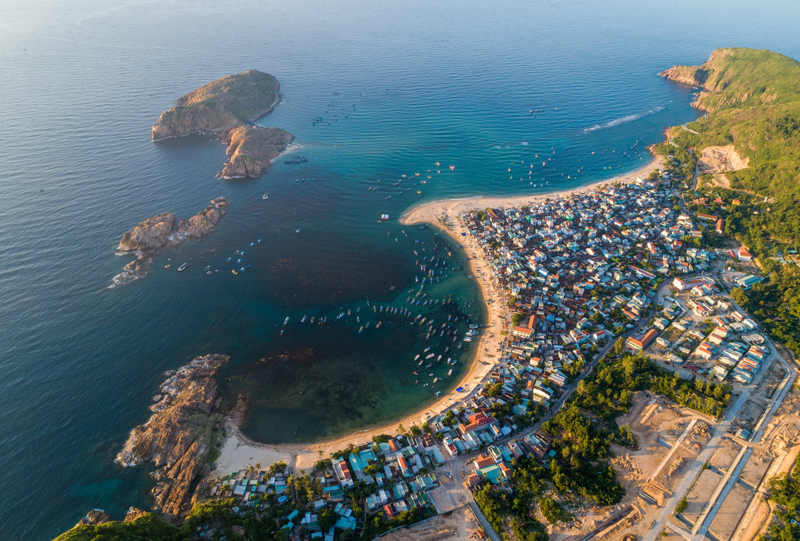The government has issued an action plan to implement a Politburo resolution on boosting socioeconomic development and ensuring defense and security in the north-central, central, and south-central coastal region to 2030 with a vision to 2045.
The action plan aims to realize the goals set in the Politburo resolution, including boosting the region’s dynamic, rapid, and sustainable development, with strengths in the sea-based economy matching the potential and advantages of the region and regional localities, promoting science and technology and innovation growth and digital transformation, maintaining cultural, historical values and maritime ecosystems, ensuring social equality, and improving local incomes.
In the 2021-2030 period, gross regional domestic product (GRDP) growth in the region is to reach 7-7.5 per cent each year. By 2030, the figure is hoped to increase 2.3-3-fold over the figure in 2020, with industry and construction accounting for about 40.7 per cent and services about 37.5 per cent. Annual per capita GRDP is to stand at about VND156 million ($6,600).
The region is targeted to make up about 20-25 per cent of the country’s total State budget collections, while its urbanization rate is expected to rise to 47-48 per cent. Over 90 per cent of all communes in the region are to become new-style rural areas.
It will strive to raise the human development index to a higher level than the country’s average, with annual per capita income to be 1.2-fold higher than the country’s average. The rate of trained workers is to reach about 75 per cent, while the percentage of poor households is to fall by 1-1.5 per cent each year. More than 95 per cent of the population is expected to have health insurance.
Focus will be placed on strongly developing urban areas in the region, especially coastal urban areas, and speeding up investment in socioeconomic infrastructure.
Thua Thien-Hue and Khanh Hoa provinces will be developed into centrally-run cities, while Da Nang will be developed into an international financial center at the regional level and Ly Son island district and Quang Ngai province will be developed into island tourism centers.
By 2030, the region is expected to have 1,554 km of expressways and will upgrade nine existing airports and invest in building two new airports in Phan Thiet city in Binh Thuan province and in Quang Tri province.
Development resources will be used to upgrade potential seaports into special seaports, especially those in Da Nang and Thanh Hoa, Nghe An, and Khanh Hoa provinces; to gradually modernize the North-South railway line passing through the region; and to call for investment in building railway routes connecting the region with the Central Highlands and nearby international border gates.
Education and training infrastructure, hospitals, innovation centers, and science and technology centers will be upgraded or built.
The region will promote the development of digital infrastructure and complete institutions and policies to enhance regional links, including improving the business and investment environment, encouraging the development of businesses, and attracting resources to fully exploit the potential and strengths of the region.
The north-central, central, and south-central coastal region includes 14 coastal provinces and centrally-run cities: Thanh Hoa, Nghe An, Ha Tinh, Quang Binh, Quang Tri, Thua Thien-Hue, Da Nang, Quang Nam, Quang Ngai, Binh Dinh, Phu Yen, Khanh Hoa, Ninh Thuan, and Binh Thuan.
The region’s area accounts for 28.9 per cent of Vietnam, with a coastline stretching nearly 1,800 km, or more than 55 per cent of the country’s coastline. It is home to many deep-water ports, islands, island clusters, and key archipelagos.









 Google translate
Google translate